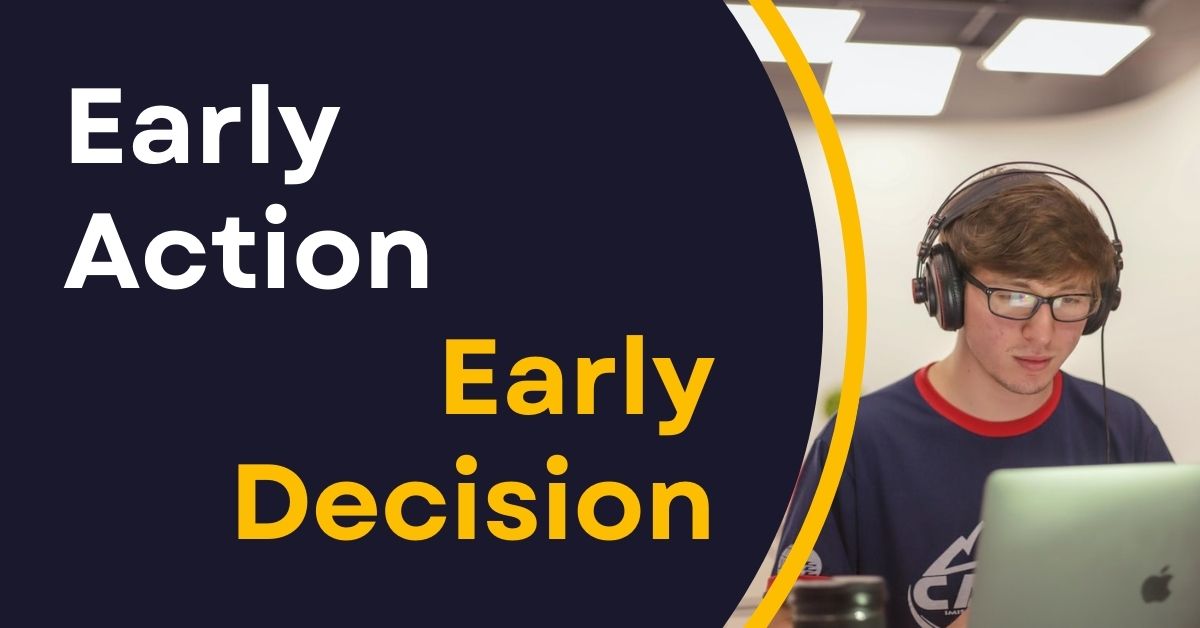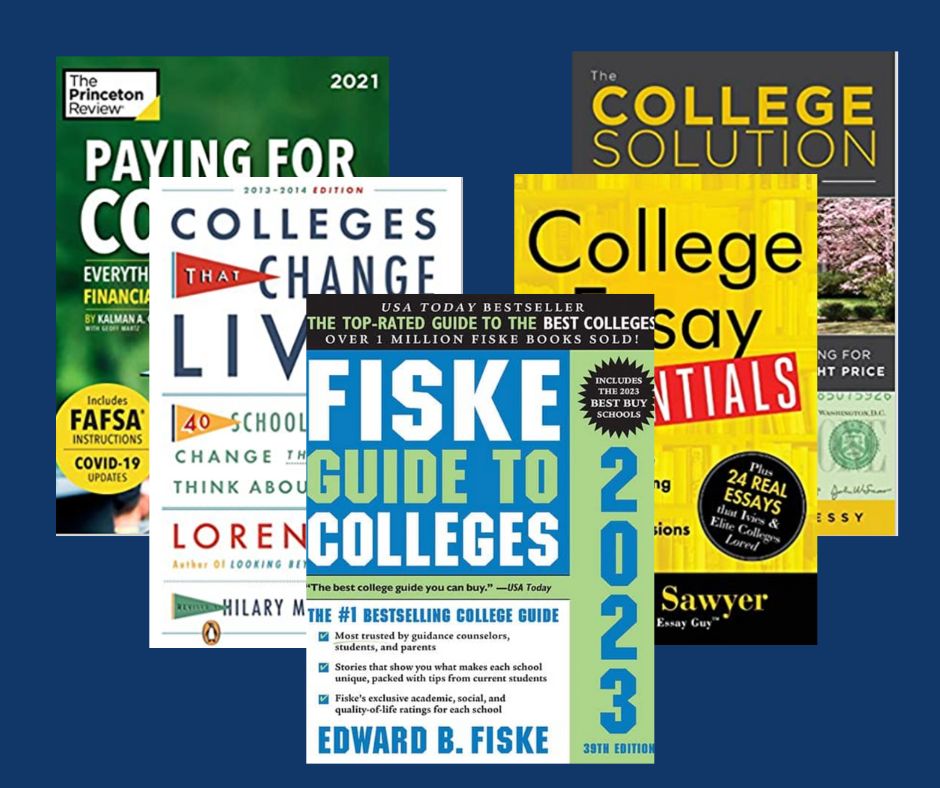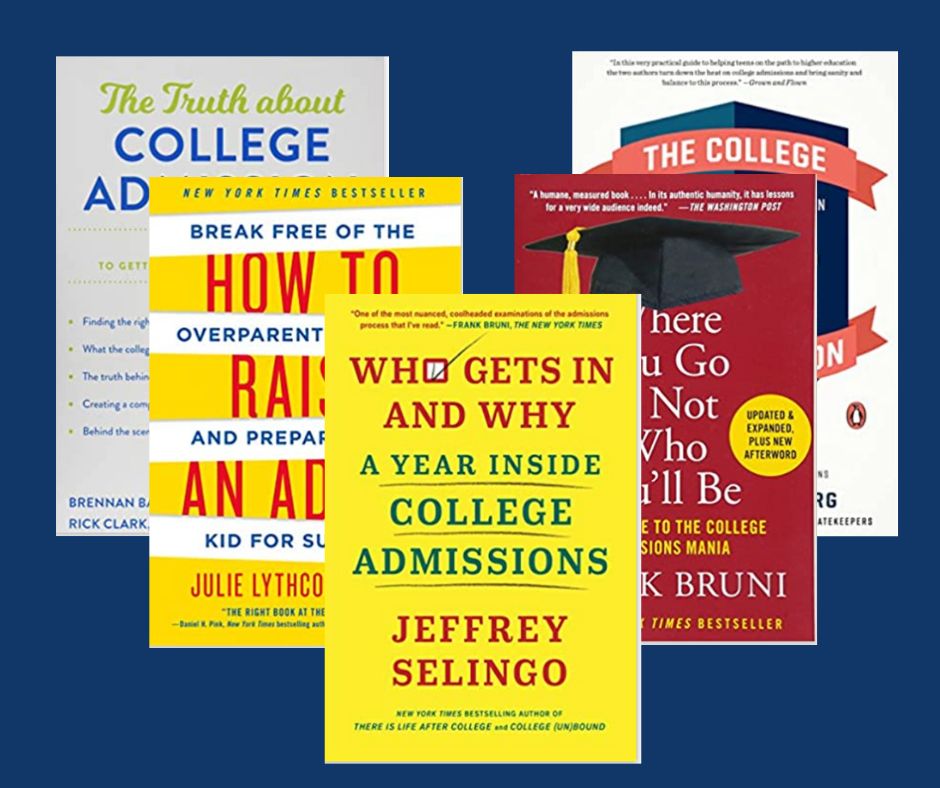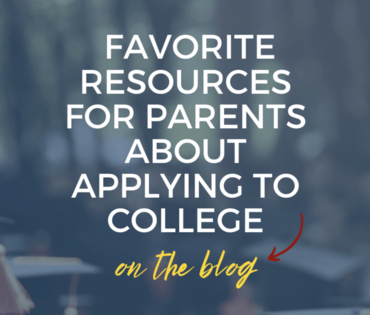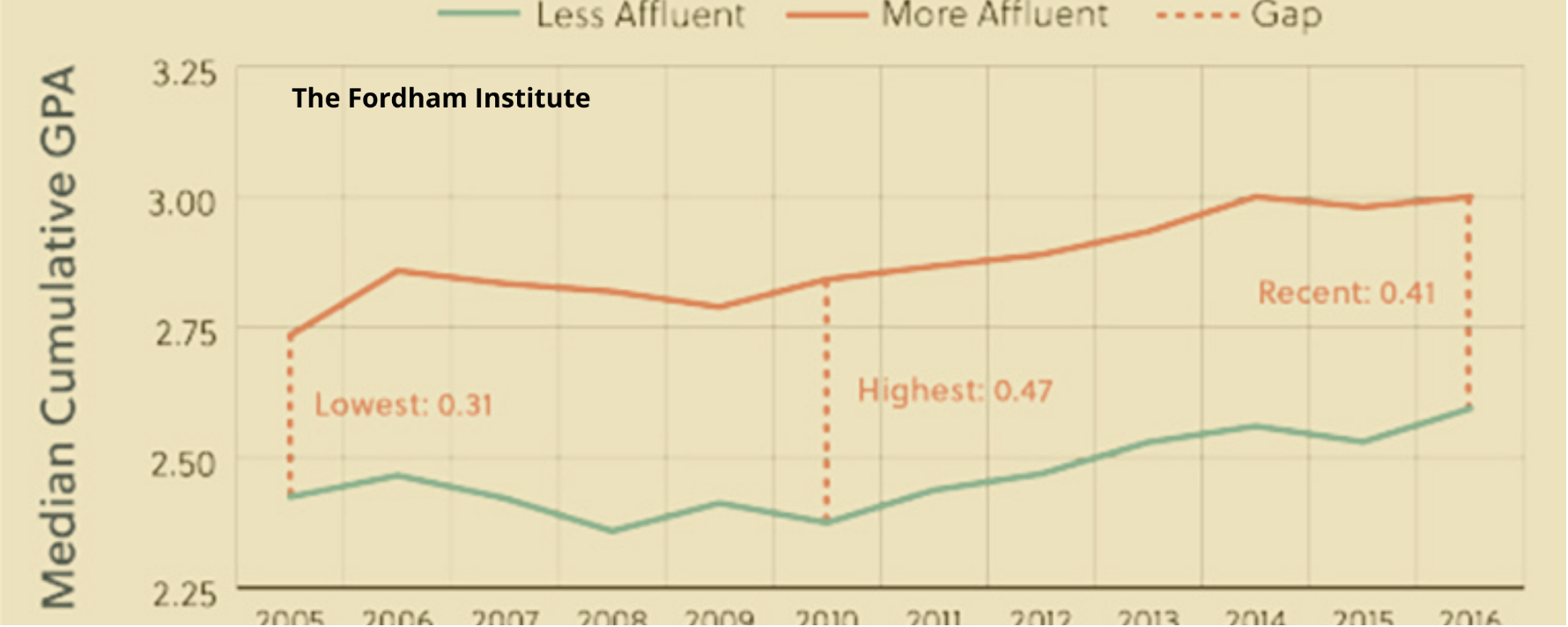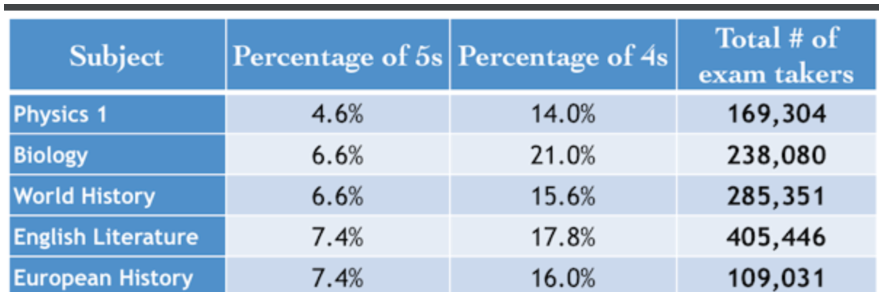Grade Inflation: Is Your A Average Really An A?
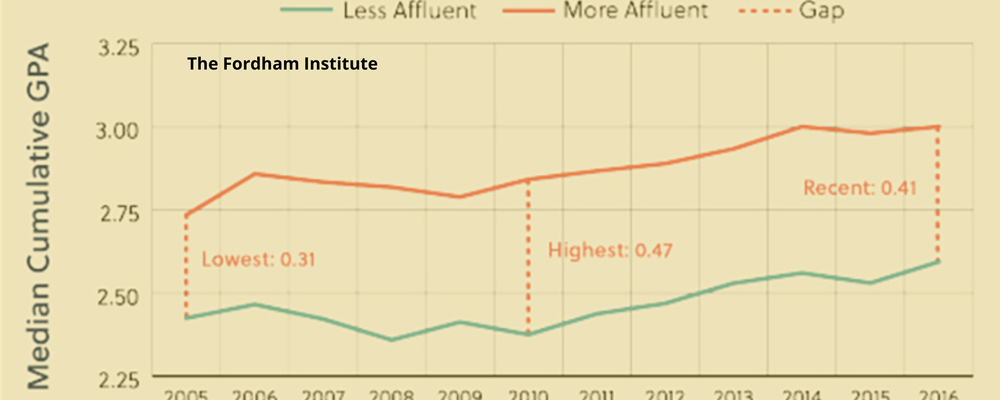
By: Valerie Erde
While it’s true that colleges want to create a well-rounded class that brings together a mix of artists, athletes, and leaders in a range of areas, they also want students who, when they arrive on campus, are able to do the work and who will graduate in four years — not six or eight.
It may be good for colleges’ wallets to have students attend for more than four years, but it’s not good for their rankings nor their reputation. This is due in large part to the way the college rankings work. One of the areas measured by the U.S. News and World Report rankings, for example, is the percentage of students who graduate in four years. If you’ve taken a college tour recently, you’ve probably noticed that this information is often featured in the presentation, and it’s also important for the Department of Education College Scorecard.
Beyond rankings, the truth is that colleges really do want students to succeed: admitting academically strong students — the ones who are ready to succeed from Day One — is the best way both to keep the rankings number up and to ensure their students will succeed academically and thrive intellectually once on campus.
For the majority of colleges and universities, especially the “most selective” ones that accept fewer than 20% of applicants, it’s your academic profile - not your extracurricular endeavors - that is going to be paramount in their decision on whether or not to accept you.
But there’s a problem: grade inflation.
GRADE INFLATION IS ON THE RISE
Not all “straight A students” are created equal. That would seem obvious, right? Honors English, social studies or science at one high school can be vastly different from the same honors course at another high school. Sometimes, the courses can even vary widely between teachers at the same school! Anyone who’s been through high school knows that some teachers are tough while others are easy.
The same is true for AP courses, though the variation isn’t as severe. That’s because the course material is dictated by the College Board and is therefore relatively standard across the country. And, of course, the culminating AP test is standardized.
Even “objective” subjects such as math include plenty of room for subjectivity in the grading. The quadratic equation is the quadratic equation, but how much time is spent on it, how it’s taught, and how many homework problems you’re assigned for practice can vary greatly.
Beyond that, some students—particularly affluent and self-advocating ones—get better grades simply because they’re perceived to be “good kids.” I’ve had many conversations about this with fellow tutors, and we’ve all had the experience of working with a student whose PSAT/P-ACT scores revealed serious deficits in math (or English), despite having straight A’s in the subject since middle school. Kids who are extroverted and build good relationships with their teachers can—often with the help of an involved parent—talk their way into extra credit, makeup work, or the dropping of a low test score.
Research shows that grade inflation is strong and on rise. Before the pandemic, 47% percent of high school students graduated with an A-minus to an A-plus average—an increase of nearly 10 percentage points over a 20-year period. And some of the biggest increases are coming from “resourced” schools, especially independent private schools. This has the effect of creating a growing pool of competitive (on paper) applicants, especially in affluent communities.
That’s a lot of kids competing for very few spots at elite colleges—many with the same high GPAs.
WHAT THIS MEANS FOR YOU
As you build a list of colleges to apply to, it’s important to have an accurate view of yourself and where you stand in relation to other applicants. It’s not helpful to have an inflated — or deflated! — sense of yourself. When it comes to applying to highly selective schools, don’t assume that a good GPA alone is going to get you in. It also depends on the rigor of your high school, whether your school is known as a grade inflator, and your standardized test scores, which serve as a crucial “validator” of your grades. If your AP test scores are much lower than your grade in the course, for example, that won’t instill confidence in the rigor of your school’s program.
BE INFORMED: KNOW WHERE YOUR HIGH SCHOOL STANDS
How can you know if your A is really an A?
It helps to understand where your high school ranks compared to others. I find that many of the parents and students with whom I work generally have a decent sense about which schools are rigorous and which ones tend to hand out top grades more easily. But if you’re not certain where your school falls on the continuum, you can find out. Just as there are college ranking lists, there are also high school ranking lists.
Writer Jay Matthews initially developed the Jay Matthews High School Challenge Index as a publicity stunt to promote a book he was writing, but it was such a hit that he’s kept it going. He studied many school’s practices in depth to see which ones were really challenging their students to take risks, try harder courses, and earn accurate grades by mastering the material. (He also has some illuminating thoughts about the role of affluence and gatekeeping for AP courses.) The upshot of his rankings is that rigor is not determined by zip code, even though grades can often be tracked along socio-economic lines.
Other groups have sought to rank high schools not by rigor, but by their college admittance outcomes. For example, lists such as Polaris and Ivy League Feeders rank high schools by the percentage of students admitted to the ivy league. So, sure, if you attend certain schools such as Horace Mann, Brunswick, Harvard Westlake, or Exeter, a greater percentage of you will be admitted to ivy league and other selective colleges. But at same time, if your high school is more competitive to get into and/or also is a massive grade inflator, the competition from your peers is also going to be greater.
KNOW WHERE YOU STAND
Above, I talked about knowing where your high school stands relative to other schools in terms of rigor, but even more important is knowing where you stand within your peer group because as I’ve mentioned before, admissions officers begin by evaluating and comparing students within the context of their own high school (i.e., the school profile provided by the high school’s guidance department), and then expand those comparisons to include additional students from the broader region.
Most of us appropriately focus on our local level. After all, the school science fair, divisional soccer championship, and regional chorus are what we know. But zoom out, and the field gets far more crowded with talent. For example, I remember my child, a clarinetist, thinking that as first chair in her high school band and in her local youth orchestra, she was “all that.” But when it came time to audition for a pre-college music program, she quickly learned that competing against students from around the region was a much different ballgame! She didn’t get in everywhere she applied, and the program she did get accepted to was far more challenging than anything she had done up to that point.
It can be difficult to learn how we stack up on a state, national, or even international level. This is largely because most private high schools and a growing number of public ones have dropped class rank as a metric, instead reporting only grades. There are more than 26,000 public high schools in the U.S. and at least another 2,800 private schools, which means that your child will be competing against tens of thousands of applicants.
“Here, the authors find that the proportion of students with A averages (including A-minus and A-plus) increased from 38.9 percent of the graduating class of 1998 to 47 percent of the graduating class of 2016. Those gains came from the B and C ranges.
Of course, the authors acknowledge in their study, there could be a reason for the grade inflation that would make educators celebrate. What if students are smarter or are being better educated, and so are earning their better grades? The authors reject these possibilities, and cite SAT scores to do so. If students were learning more, their SATs should be going up, or at the very least remaining stable. But during the period studied, SAT averages (math and verbal, 1,600-point scale) fell from 1,026 to 1,002.”
Compare that to the number of students who get a 4 or 5 on the English Literature AP Exam:

Only 7.4% of students earned a 5 on the AP English Lit. exam — a far cry from the 47% of students who have an A- to A+ average. (Another interesting takeaway is the number of total students earning a 5 on the AP Lit. exam — 30,000+ — is greater than the number of first-year slots at all of the Ivies combined.)
If you feel overwhelmed by this process, take a deep breath. There are some concrete steps you can take to make sure your application is as strong as it can be in a world of rampant grade inflation.
PARENTS: DON’T HELICOPTER, BUT DON’T DISAPPEAR
Your high school student needs you more than they think — and more than you think, even in terms of their high school academics.
A 2018 survey published by Learning Heroes, a parent information group, found a big disconnect, especially among parents of high school students, between how they feel their child is performing and teachers’ reports of student performance. Interestingly (interestingly to me at least!), there was also a disconnect between how involved parents felt they needed to be in their high school student’s academic performance and the level of parental involvement teachers attributed to student success – especially earlier on in high school (9th and 10th grades).
PLAN YOUR COURSE SELECTIONS BEFORE HIGH SCHOOL
If you’re reading this as a parent of a junior, unfortunately, it’s a bit late, but senior-year courses are still very important and not a time to slack off! If you think you may want to apply to the most selective schools, please go to the admissions websites and check their high school curriculum requirements. For the ivies, for example, not taking all three core lab sciences (bio, chem, physics), or not taking four years of a foreign language, is frowned upon and may put you at a competitive disadvantage.
For parents of younger students, remember, certain courses, you won’t be able to get to the honors or AP level in high school if you don’t think about where you’re headed early on. This is true if your high school has minimum grade requirements or if they have a hard-and-fast rule about course sequencing. Math, in particular, can require good choices as early as seventh grade.
DON’T OVERDO IT, BUT DON’T BE AFRAID TO CHALLENGE YOURSELF
I really like this line from a U.S. News article about high school class rigor: “Find Your Magic Number Of Advanced Classes.” This number will be different for everyone.
Note for athletes: A few of my student athletes have reported coaches advising them not to take AP and other challenging courses. I’m writing a whole separate article on athletics in high school, but remember, while it may be in your coach’s interest for you to take less challenging classes so you have more time to focus on your sport, it is not necessarily (and not usually) in your interest to do so.
TAKE MORE “STANDARDIZED” AP & IB COURSES IF YOU CAN
In addition to showing your willingness to take challenging classes, AP and IB courses have a standardized curriculum and assessment, which provides a measure of your learning that allows colleges to accurately compare your achievements with students from around the country. Don’t blow off the exam — it’s the best way to know where you stand.
CHOOSE AP COURSES WISELY
AP Psychology, AP Comparative Government & Politics, and AP Environmental Science (APES) are considered to be among the easiest AP classes. That doesn’t mean you shouldn’t take them if those subjects interest you! It just means that if you are aiming for Stanford or MIT, for example, APES may not be thought of as highly as AP Biology, Chemistry, or Physics.
STANDARDIZED TESTS(AP, ACT, SAT) “CORROBORATE” YOUR GRADE
I’ve said this over and over again, and just yesterday, as I was doing a last edit on this blog post, MIT announced that for 2022 applicants, it will be joining Georgetown University in reinstating the ACT or SAT requirement. Here’s a quote from MIT’s announcement about the academic rationale for reinstating the tests. (There’s also an important equity reason.)
“In short: Our research has shown that, in most cases, we cannot reliably predict students will do well at MIT unless we consider standardized test results alongside grades, coursework, and other factors. These findings are statistically robust and stable over time, and hold when you control for socioeconomic factors and look across demographic groups. And the math component of the testing turns out to be most important. ”
— STUART SCHMILL, MIT DEAN OF ADMISSIONS
About Valerie Erde of Veridian Prep:
VeridianPrep is an academic tutoring and test prep company that combines years of subject expertise and experience with evidence-based approaches to teaching and learning. VeridianPrep’s strengths lie in quickly determining each student’s strengths and gaps to offer a personalized, and results-oriented approach that builds skills and confidence to help teens succeed not only in a single class or test, but also in their next journey -- college. Currently, VeridianPrep covers all levels of Math, English, Chemistry, and Physics including AP/ACT/SAT/SAT II, meeting one-on-one with students at home, in offices in Greenwich, CT/NYC, or online. https://www.veridianprep.com
If you are interested in speaking with Valerie Erde, or other advisors at Versed about helping students discover their interests and pursue meaningful activities, please contact us.
For addition insights, read:
How to Guarantee Academic Success
Subscribe to our Newsletter
Receive inside track information on college admissions process, high school and middle school planning, general pre-college guidance, and be the first to know about our events and announcements.
Comments
- Versed Editors's Blog
- Log in or register to post comments

